| Vintage Pulp | May 16 2023 |

Don't lose hope. If we survive this we'll probably both get a chance to act in better movies.
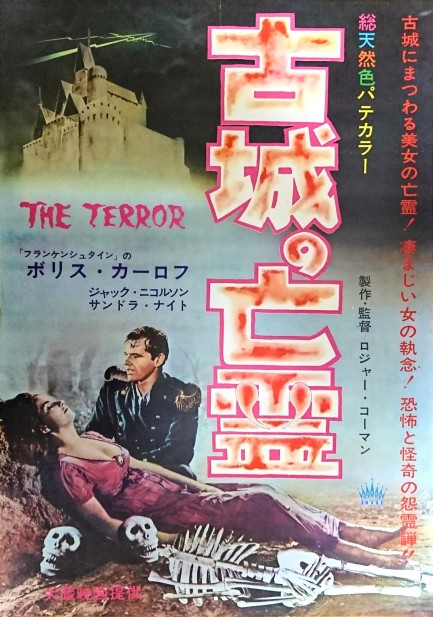
This poster was made for the horror movie The Terror, and we're showing you the Japanese promo art because—as is often the case—it's nicer than the U.S. promo. Boris Karloff and Jack Nicholson star, actors passing in the night, Karloff aged seventy-six and on the downward slope of a legendary film career, Nicholson aged twenty-six on the upslope. The latter plays a French army lieutenant named Andre Duvalier who becomes stranded circa 1806 in ye olde creepy-ass castle on the hill, which is occupied by Karloff's rickety Baron Victor von Leppe. Jack sees a mysterious woman wandering around. Karloff explains that she's the ghost of his wife, the Baronness Ilsa von Leppe, who died twenty years ago. Nosy Nicholson doesn't believe that for a millisecond, but the Baron sticks to his story, even admitting he killed the Baronness with his bare hands for the crime of adultery. Nice confession, but the Baron is lying or being duped, as far as Nicholson is concerned. In either case, the question is why?
Director Roger Corman was working from an Edgar Allen Poe template here, and in fact he shot on castle sets originally used for The Raven, which had wrapped earlier in the year. It's always good to save a buck where you can, but any advantage was lost due to Corman working from an unfinished script, which led to reshoots by Francis Ford Coppola, Dennis Jakob, Monte Hellman, and Jack Hill. All that talent wasn't enough to put together a film befitting Nicholson and Karloff, but the two leads do their damndest, and the result, though not good, isn't an embarrassment. Afterward, Karloff continued coasting into the twilight, Nicholson and Coppola moved on to widespread acclaim, Hill helped launch the blaxploitation cycle and make a star of Pam Grier, and Hellman directed the cult masterpiece Two-Lane Blacktop. It's a miracle they all contributed something lasting to cinema, because you'd never suspect it watching The Terror. It premiered in the U.S. in 1963 and reached Japan today in 1964.
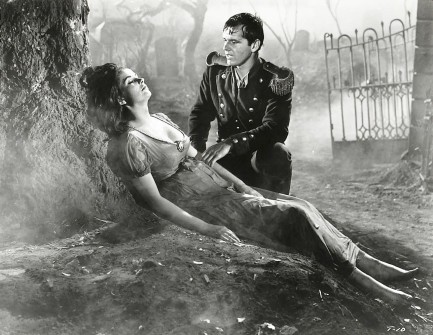
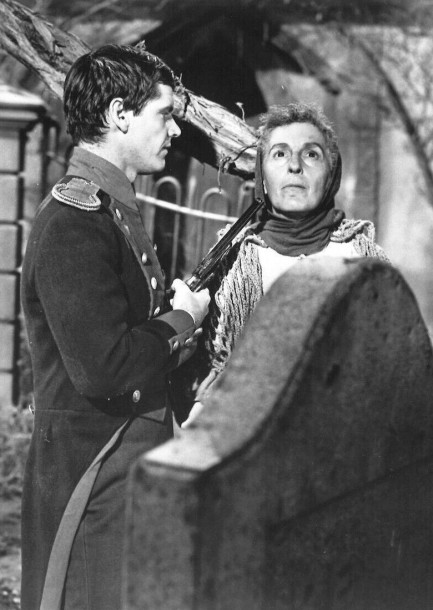
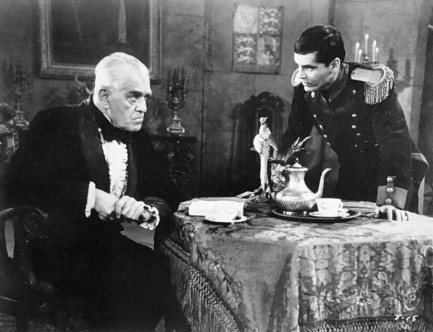
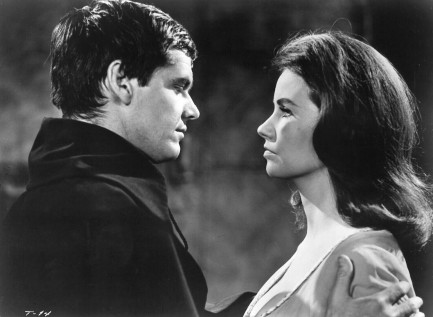
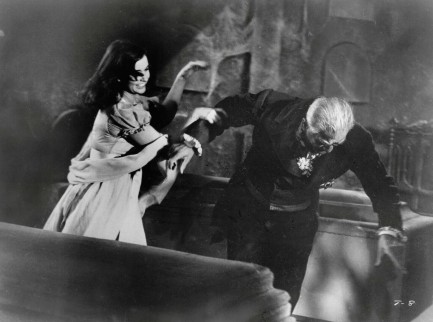
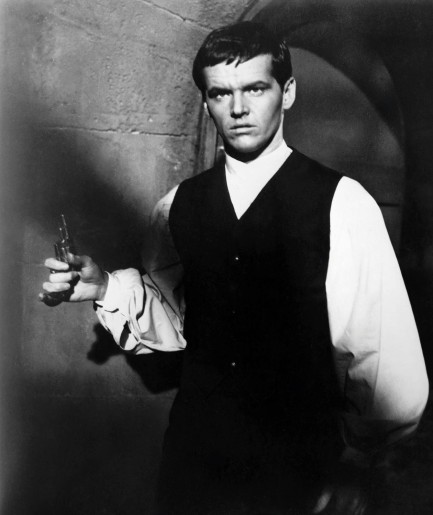
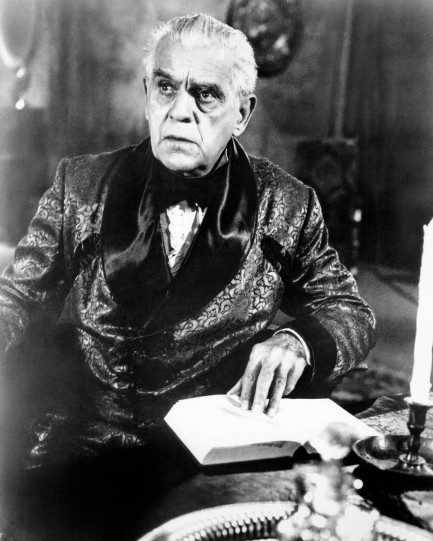
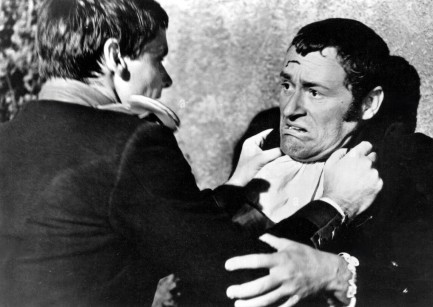








| Vintage Pulp | Jan 24 2023 |

He doesn't have a hook for a hand yet, but he's always practicing for that day.
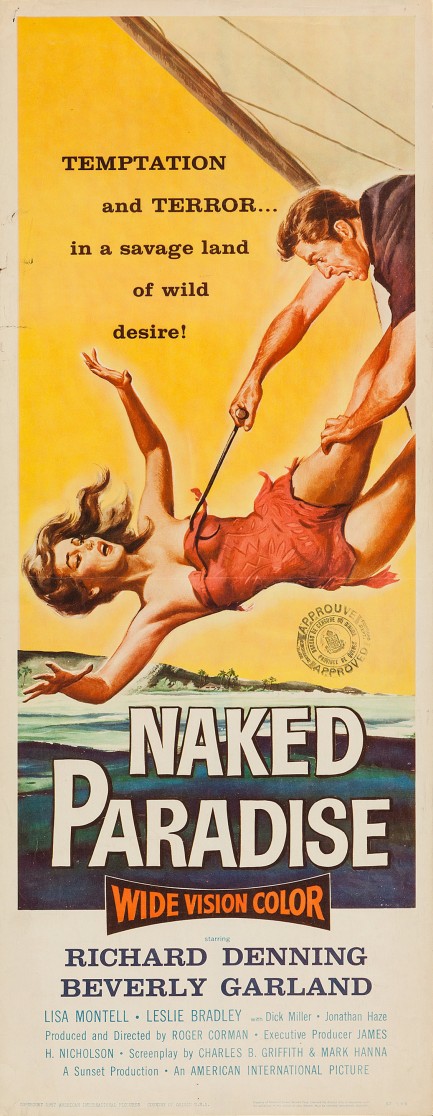
The first thing to know about Naked Paradise is that it's an early Roger Corman movie, made by Sunset Production and distributed through American International Pictures, companies he helped establish. Corman also directed, so it's safe to say he had near-total control of the movie on and off the set. While he's made some real stinkers over the years, by his standards Naked Paradise isn't terrible. That doesn't mean its good. It's still laughably dopey in parts, the type of movie you can riff on from start to finish, but narratively it hangs together reasonably well and a couple of the actors practice their craft with competence.
Plotwise, three criminals led by Leslie Bradley travel to Oahu disguised as pleasure cruisers to try lifting a massive pineapple and sugar cane plantation's payroll. Their escape is via the same method as their arrival, unbeknownst to their boatmates, who at first are too busy sunning themselves and romancing to realize there are three dangerous criminals in their midst. Tensions between the boat's captain Richard Denning and the crooks soon come to a frothing head when the lead heister and his arm candy Beverly Garland acrimoniously split from each other.
The group are then stuck together during a tropical storm, a plot turn which brings to mind Key Largo. In fact we can hear screenwriter Robert Wright Campbell's pitch to Corman: “You see, it's Key Largo, sandwiched on one side by deep backstory showing the audience why Johnny Rocco and his henchmen are on the run, and on the other by an extended aquatic climax.” That's exactly the movie Corman made, though doubtless done far more cheaply than Campbell ever envisioned.
Corman has a genius for conjuring final results that are better than their shoestring budgets should allow, and he certainly is an unparalleled wrangler of nascent talent. He's given opportunities to directors such as Coppola, Demme, Scorsese, and Ron Howard, and performers like Jane Fonda and William Shatner. If there's such as thing as a pulp filmmaker he's the guy. His stories nearly always aim for the gut by focusing on action with a hint of innuendo, and rely upon the most standard of cinematic tropes. Naked Paradise is quintessential Corman. Is it good? Not really. But it's certainly watchable. It premiered this month in 1957.
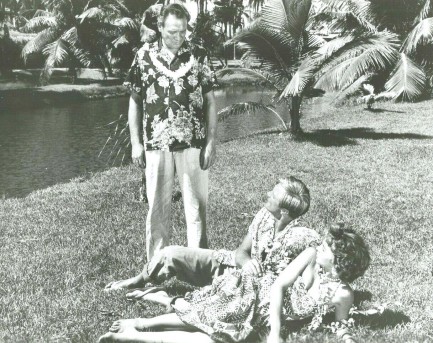
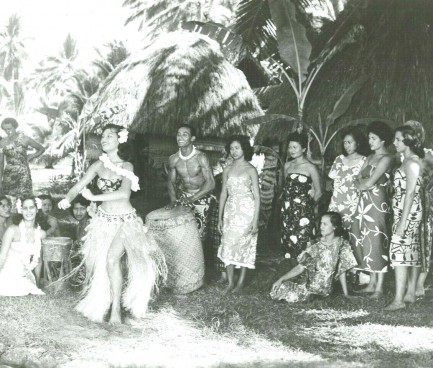
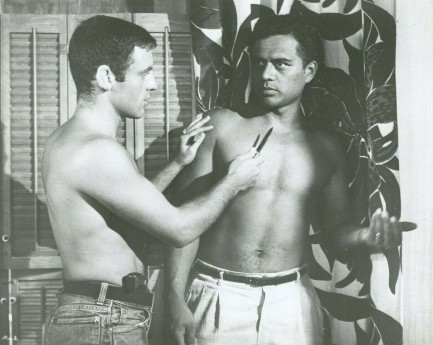
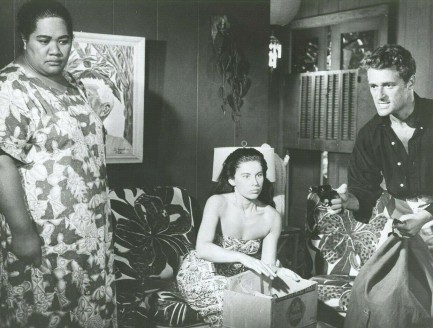
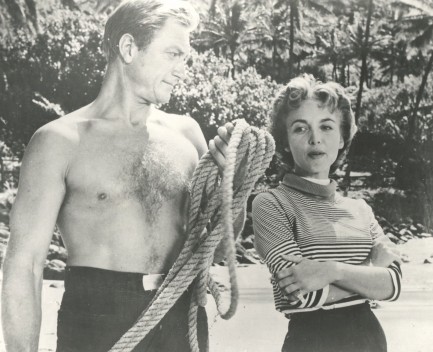
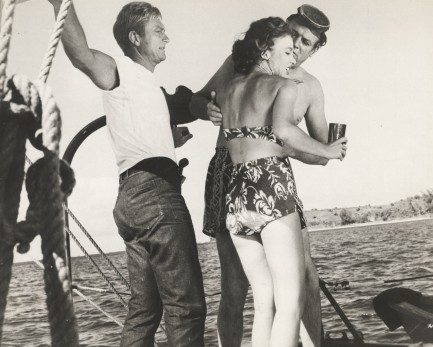
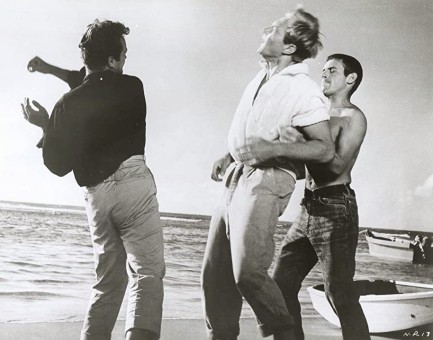
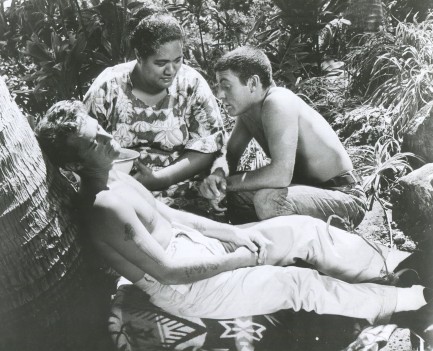
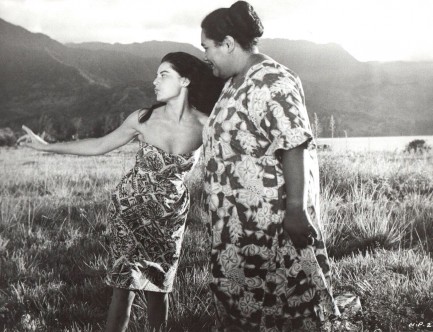
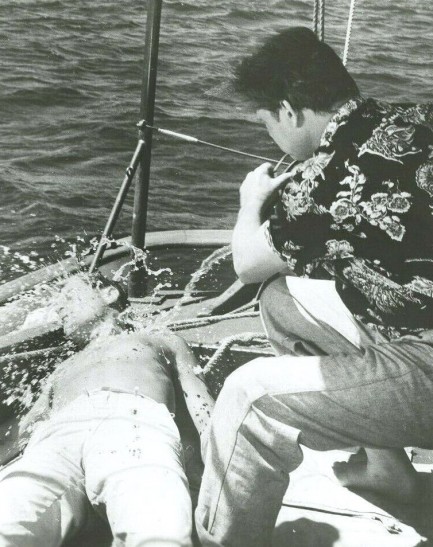
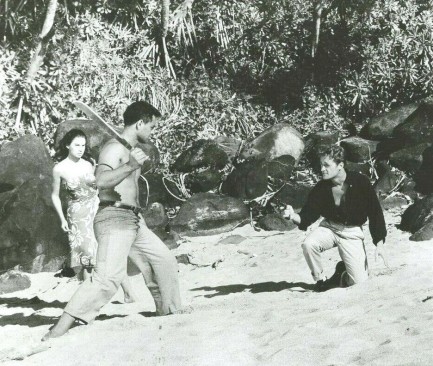
The group are then stuck together during a tropical storm, a plot turn which brings to mind Key Largo. In fact we can hear screenwriter Robert Wright Campbell's pitch to Corman: “You see, it's Key Largo, sandwiched on one side by deep backstory showing the audience why Johnny Rocco and his henchmen are on the run, and on the other by an extended aquatic climax.” That's exactly the movie Corman made, though doubtless done far more cheaply than Campbell ever envisioned.
Corman has a genius for conjuring final results that are better than their shoestring budgets should allow, and he certainly is an unparalleled wrangler of nascent talent. He's given opportunities to directors such as Coppola, Demme, Scorsese, and Ron Howard, and performers like Jane Fonda and William Shatner. If there's such as thing as a pulp filmmaker he's the guy. His stories nearly always aim for the gut by focusing on action with a hint of innuendo, and rely upon the most standard of cinematic tropes. Naked Paradise is quintessential Corman. Is it good? Not really. But it's certainly watchable. It premiered this month in 1957.















































































